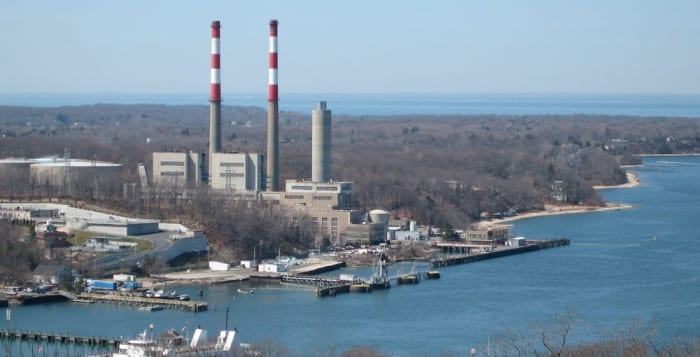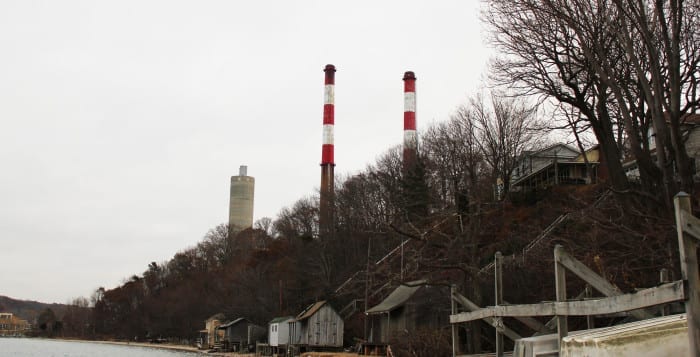A clerical item on the Brookhaven Town Board’s agenda regarding Caithness Long Island II, a proposed Yaphank power plant, caused a stir among some Port Jefferson residents on Thursday, as they questioned what exactly the board was voting on.
Earlier in the week, Supervisor Ed Romaine (R) predicted the issue at a Monday work session meeting. The item — accepting documentation about covenants and restrictions at the project site — was included under the board’s Communication Consensus agenda. Romaine said the town received correspondence that the information was filed with the Suffolk County Clerk’s Office, and the board had to vote to accept it. He added that the Town Board was not trying to sneak anything by residents.
“We have to list correspondence that we receive,” he said Monday.
Last July, the Town Board granted Caithness Long Island II a special permit for its proposed 752-megawatt power plant. Romaine and Councilwoman Valerie Cartright (D-Port Jefferson Station) remained in the minority and voted against the permit.
Some Port Jefferson residents adamantly oppose the project, as they fear it could negatively impact the chances of the Port Jefferson power plant being upgraded. Critics allege the Caithness project’s environmental impact statement was flawed and didn’t adequately address impacts on the surrounding communities and species living near the property, which is adjacent to an existing 350-megawatt Caithness power plant.
At Thursday’s meeting, standing together in the minority as they did on the special permit vote, Cartright and Romaine voted against accepting the Caithness communication. Cartright said the project should be re-evaluated, as PSEG Long Island has stated there will be sufficient local energy capacity until about 2020, and thus there is no need for Caithness II.
“In light of that fact, it appears to me that the [environmental review] process was based on an erroneous premise, as the original … findings for this project were in part based on an additional need of power,” she said.
During public comment, Port Jefferson Village Trustee Bruce Miller expressed his frustration with the Town Board granting the special use permit and with how backup documents, which officials said are available at the town and county clerk’s offices, weren’t provided with Thursday’s agenda.
Miller said he sympathized with Medford residents, some of whom attended the same meeting to advocate against a proposed casino in their neighborhood.
“Only two people on this board are voted for by the people from Port Jefferson,” he said, referring to the supervisor and the councilwoman, “and yet the rest of the board members can vote with impunity against us and against our interests.”








